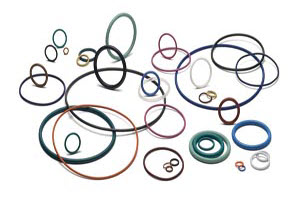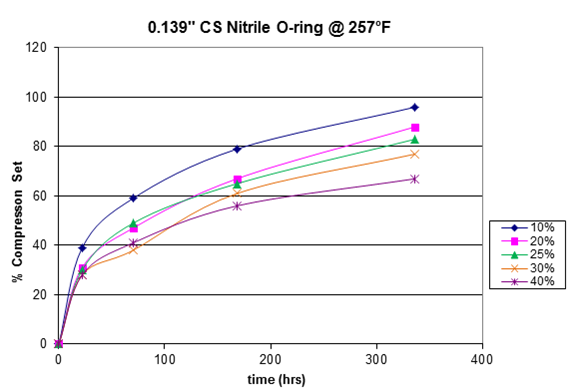Article re-posted with permission from Parker Hannifin Sealing & Shielding Team.
Original content can be found on Parker’s Blog.
One of the decisions equipment designers need to make when installing O-ring seals in their applications is how much the O-ring will be squeezed by its mating hardware to create an effective seal.
What is O-ring squeeze

The greater the squeeze, the more force is applied against the hardware and the tighter the seal. But that doesn’t necessarily mean that designers should always specify the most squeeze (assuming they knew what that level was or why it was “the most”). There are a number of factors to consider, which include:
Seal tightness
As just noted, tighter seals generally result from higher levels of squeeze. Beyond a certain level, however, other factors intervene that can work against an effective seal, such as the stress the force causes on mating hardware.
Mating hardware stress
If you increase the squeeze, and its compressive force, too much you can potentially damage mating hardware, depending on the materials and the design of the hardware.
Application friction and wear
With higher squeeze also comes more friction and faster wear in dynamic applications. This may be enough to affect device function. For example, in a medical device that involves manual adjustment, an O-ring that generates too much friction may prevent the physician from properly utilizing the device.
O-ring damage
With higher squeeze comes higher risk that pinching will occur when the O-ring is installed — creating pathways for fluid or gas to flow around the seal. Figure 1 shows finite element models of what happens when O-rings are installed with 40 percent and 25 percent squeeze, respectively. The models depict O-ring pinch damage during assembly in a male (piston-type) O-ring gland. At the 40 percent level, pinching is difficult to avoid while pinching is eliminated at the 25 percent level.
Compression set
The force that the squeezed elastomer exerts against the mating hardware, creating the seal, tends to decay with time. When that force decays entirely, the O-ring will retain its squeezed shape even when it is no longer squeezed. Compression set is a measure of this decay, expressed as a percentage. When compression set reaches 80 percent, most O-rings are in danger of losing their ability to seal. O-rings at higher squeeze levels generally take longer to reach that 80 percent compression set level. Based only on compression set, then, higher squeeze levels generally translate to longer useful O-ring work lives.

Last word of caution
Designers need to consider carefully all these factors — in addition to other application-specific factors such as temperature and the pressure of the materials being sealed — before they decide how much O-ring squeeze to apply. The correct decision translates to an optimum seal over the longest O-ring life span with the least damage to either the O-ring itself or its mating hardware.
You can find more support info and FAQ's on our website at this Support Link. If you have an immediate questions, we have live chat with our application engineers available for a number of our divisions - look for the "Chat with an Engineer Button."
This article was contributed by Dan Ewing, Engineering Supervisor, Parker Hannifin O-Ring Division.
Source: http://blog.parker.com/selecting-the-right-o-ring-seal-squeeze-ratio
